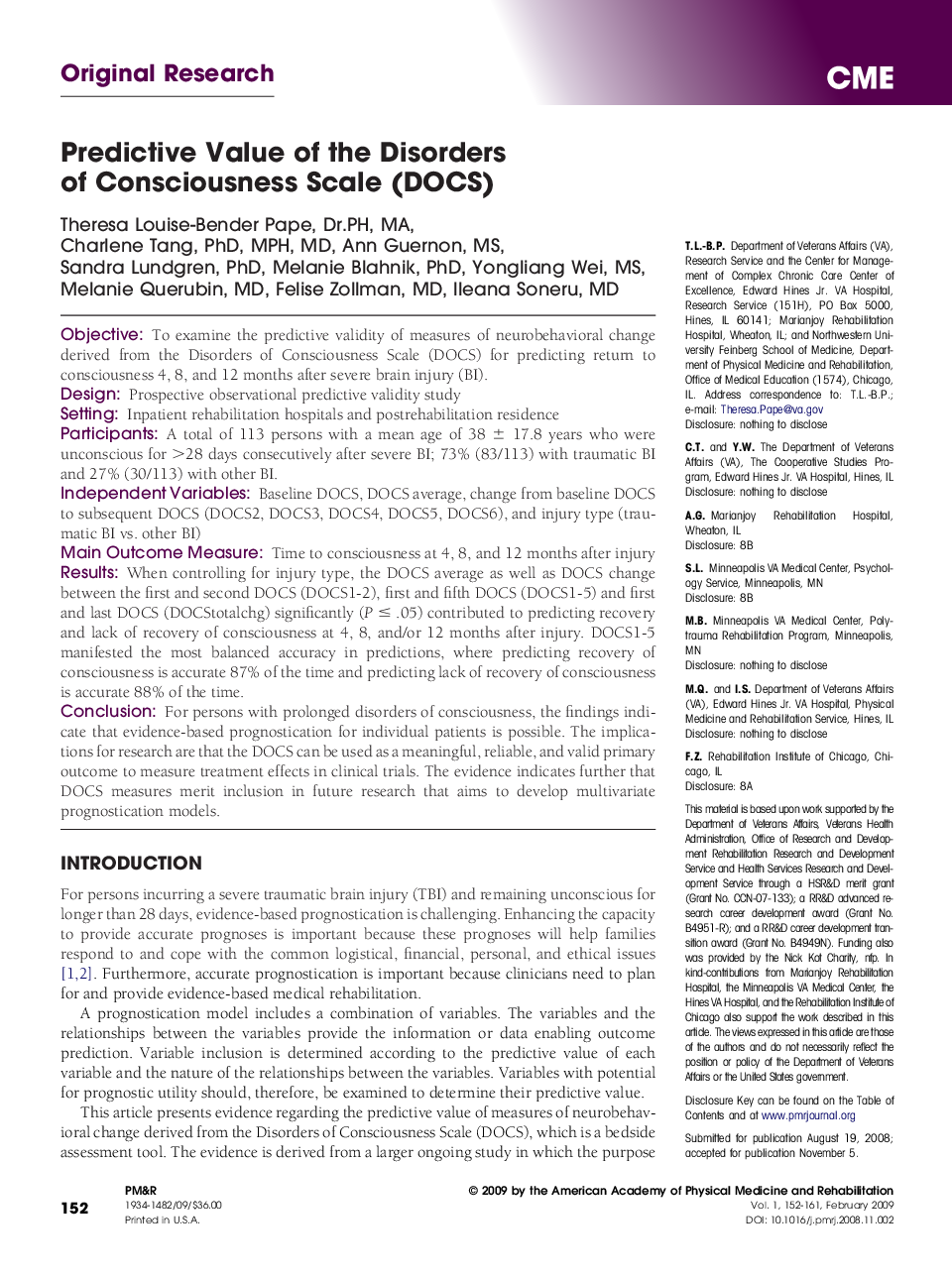| Article ID | Journal | Published Year | Pages | File Type |
|---|---|---|---|---|
| 2707265 | PM&R | 2009 | 10 Pages |
ObjectiveTo examine the predictive validity of measures of neurobehavioral change derived from the Disorders of Consciousness Scale (DOCS) for predicting return to consciousness 4, 8, and 12 months after severe brain injury (BI).DesignProspective observational predictive validity studySettingInpatient rehabilitation hospitals and postrehabilitation residenceParticipantsA total of 113 persons with a mean age of 38 ± 17.8 years who were unconscious for >28 days consecutively after severe BI; 73% (83/113) with traumatic BI and 27% (30/113) with other BI.Independent VariablesBaseline DOCS, DOCS average, change from baseline DOCS to subsequent DOCS (DOCS2, DOCS3, DOCS4, DOCS5, DOCS6), and injury type (traumatic BI vs. other BI)Main Outcome MeasureTime to consciousness at 4, 8, and 12 months after injuryResultsWhen controlling for injury type, the DOCS average as well as DOCS change between the first and second DOCS (DOCS1-2), first and fifth DOCS (DOCS1-5) and first and last DOCS (DOCStotalchg) significantly (P ≤ .05) contributed to predicting recovery and lack of recovery of consciousness at 4, 8, and/or 12 months after injury. DOCS1-5 manifested the most balanced accuracy in predictions, where predicting recovery of consciousness is accurate 87% of the time and predicting lack of recovery of consciousness is accurate 88% of the time.ConclusionFor persons with prolonged disorders of consciousness, the findings indicate that evidence-based prognostication for individual patients is possible. The implications for research are that the DOCS can be used as a meaningful, reliable, and valid primary outcome to measure treatment effects in clinical trials. The evidence indicates further that DOCS measures merit inclusion in future research that aims to develop multivariate prognostication models.
